Chapter 28
A Photograph that Touched a Nation
By Gretchen Winterer, Uniforms and Heraldry Curator
Featured artifact: Gloves, TAA M-PACT Mechanix, Pair (2023.21.1a-b)
Throughout its history, the U.S. Marine Corps has undertaken many humanitarian missions, demonstrating a commitment to aiding civilians in times of crisis. In 1900, during the Boxer Rebellion in China, Marines provided essential food supplies to famine-stricken civilians. During the Banana Wars in Central America and the Caribbean in the early twentieth century, Marines played a vital role in safeguarding civilians amid civil unrest.
This ethos of understanding and addressing the needs of local populations continued into the Marine Corps’ missions in the Middle East. When the Global War on Terrorism began in Afghanistan in 2001, the importance of ground intelligence became evident. One significant challenge faced by U.S. and Coalition ground forces was establishing trust with local indigenous populations, particularly women residing in local villages. Cultural norms often hindered interactions between men and women, creating additional barriers. Women within these villages possessed invaluable knowledge about the surrounding areas. Recognizing this potential, the Marine Corps examined of the role that female Marines could play in directly engaging with Afghan women. Thus emerged the concept of Female Engagement Teams (FETs).[1]
The Marine Corps began the FET program in 2009 in Afghanistan. FETs deployed in small teams consisting of two or three members, typically attached to a battalion, company, or platoon. They went through traditional combat training but also developed communication skills to better connect with local women and children. Sergeant Sheena Adams wrote in a 2013 Leatherneck article that “FETs were brought in to talk to the other 50% of the population that the male infantry could not [talk to], but we ended up being so much more than that. Females have that soft side that makes the males want to open up and talk to . . . to the local population even though we are carrying our weapons we are not viewed as a threat but as someone willing to help.”[2] FETs gathered information from Afghan families and communicated with women while respecting cultural norms. The presence of these teams provided the Marine Corps with an additional tool for engaging with the Afghan population. This, however, did not come without the repercussions of operating in combat zones. According to the Service Women’s Action Network, “more than 300,000 women deployed to Iraq and Afghanistan, with 166 women killed in combat operations and more than 1,000 wounded.”[3] Sergeant Nicole L. Gee was one of those casualties.
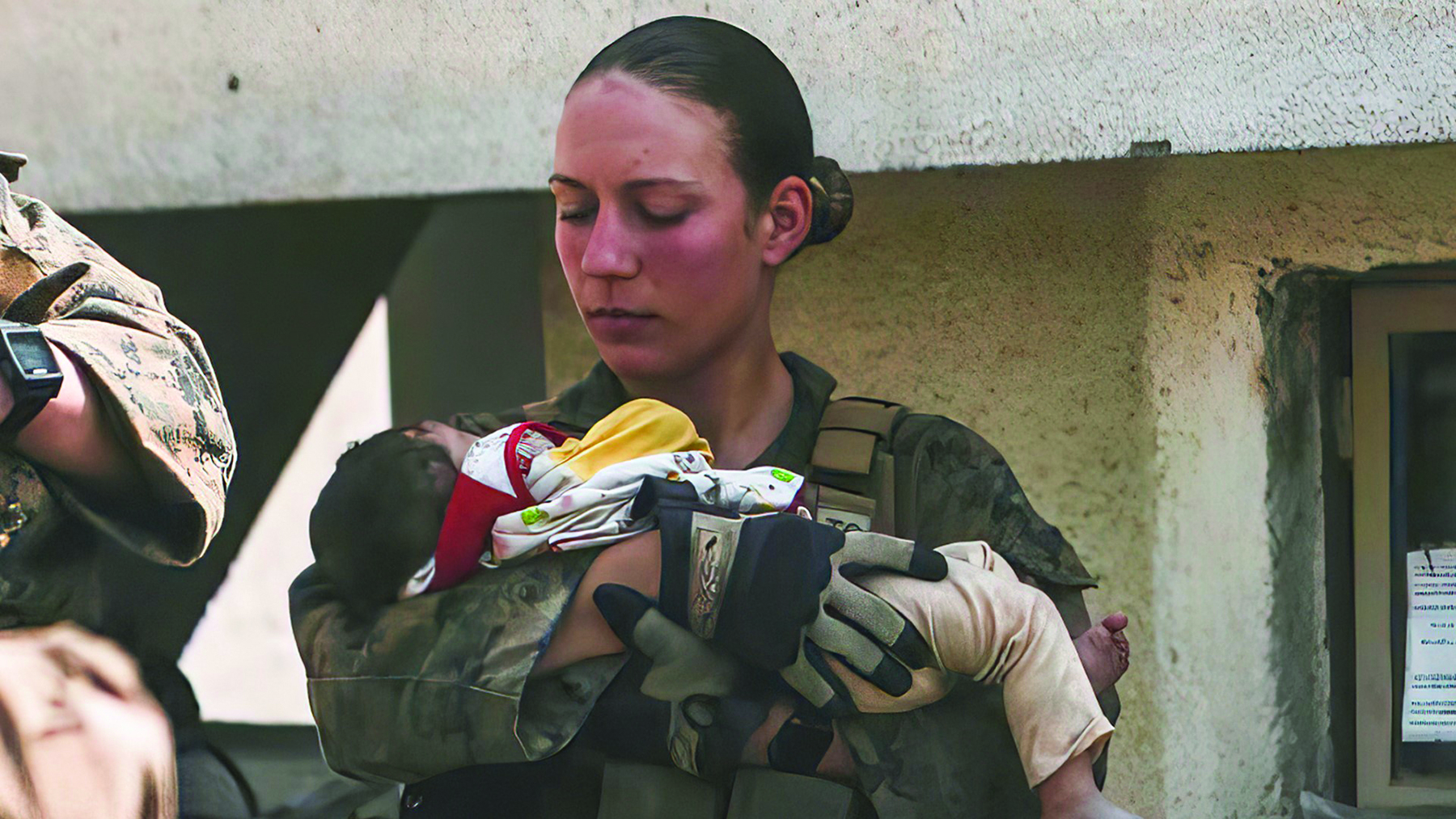
Sgt Nicole Gee calms an infant during the evacuation at Hamid Karzai International Airport in August 2021.
Photo by Sgt Isaiah Campbell, Defense Visual Information Distribution Services.
Sergeant Gee, originally from Roseville, California, joined the Marine Corps in 2018 and was subsequently attached to Combat Logistics Battalion 24, where she focused on maintaining ground electronics transmission systems. In early 2021, she was assigned a 7-month deployment to Afghanistan with the 24th Marine Expeditionary Unit, in support of the U.S. withdrawal from the region and the accompanying noncombatant evacuation operation. Gee served with an FET dedicated to assisting Afghan women and children.
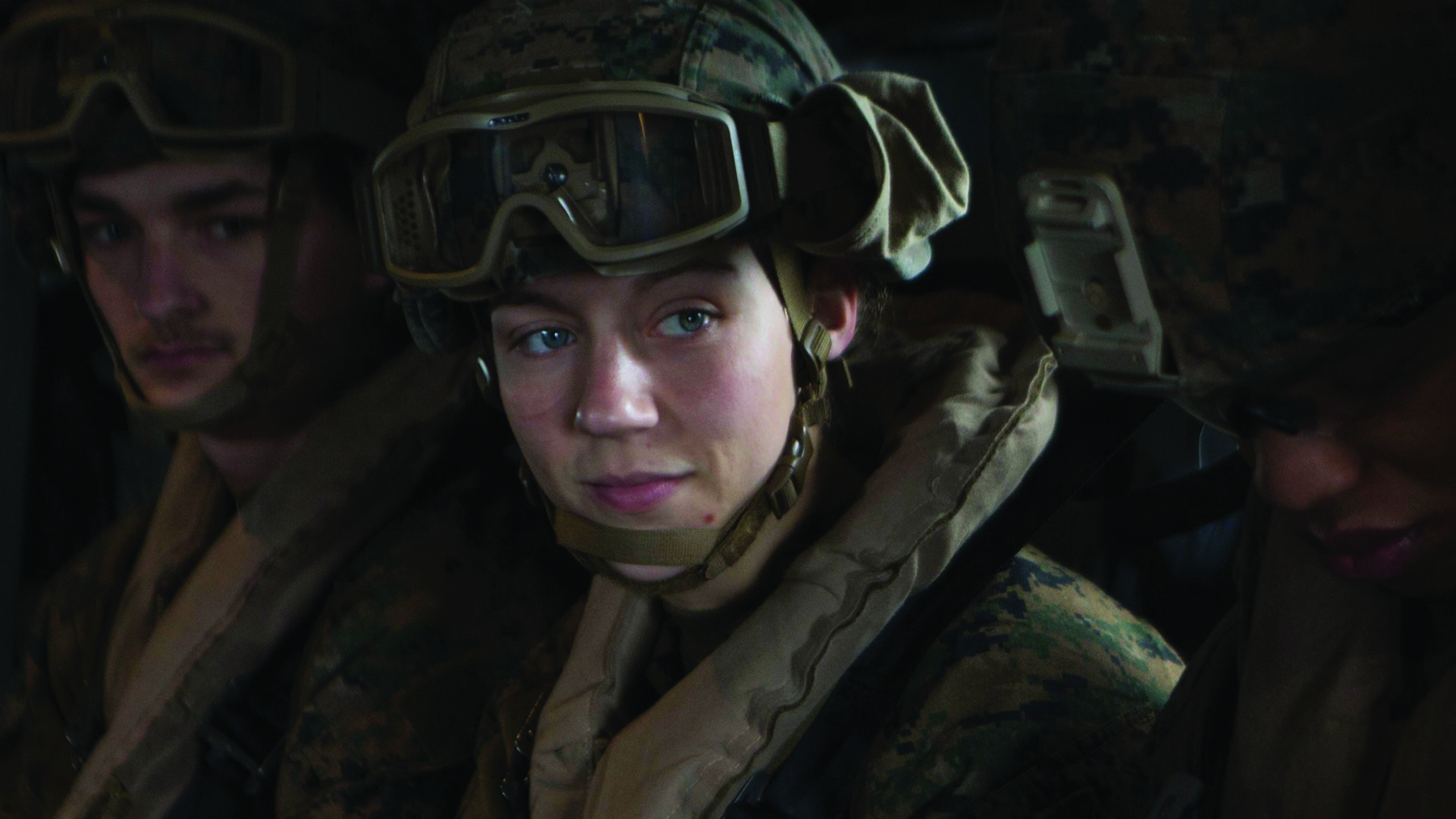
Sgt Gee with the 24th Marine Expeditionary Unit during an exercise on 5 April 2021.
Official U.S. Marine Corps photo by SSgt Mark E. Morrow Jr., Defense Visual Information Distribution Services.
Sergeant Gee arrived at the Hamid Karzai International Airport in Kabul, Afghanistan, on 15 August 2021. Eleven days later, she was killed in a suicide bombing attack at the airport. She was just 23 years old. Twelve other servicemembers, 11 of whom were Marines, were also killed in the attack, with 18 more being injured. Just days before her death, Gee shared a heartfelt social media post depicting her caring for an Afghan infant, accompanied by the words, “I love my job.”[4] It is estimated that the FETs, including Gee, helped screen about 124,000 evacuees in Afghanistan.
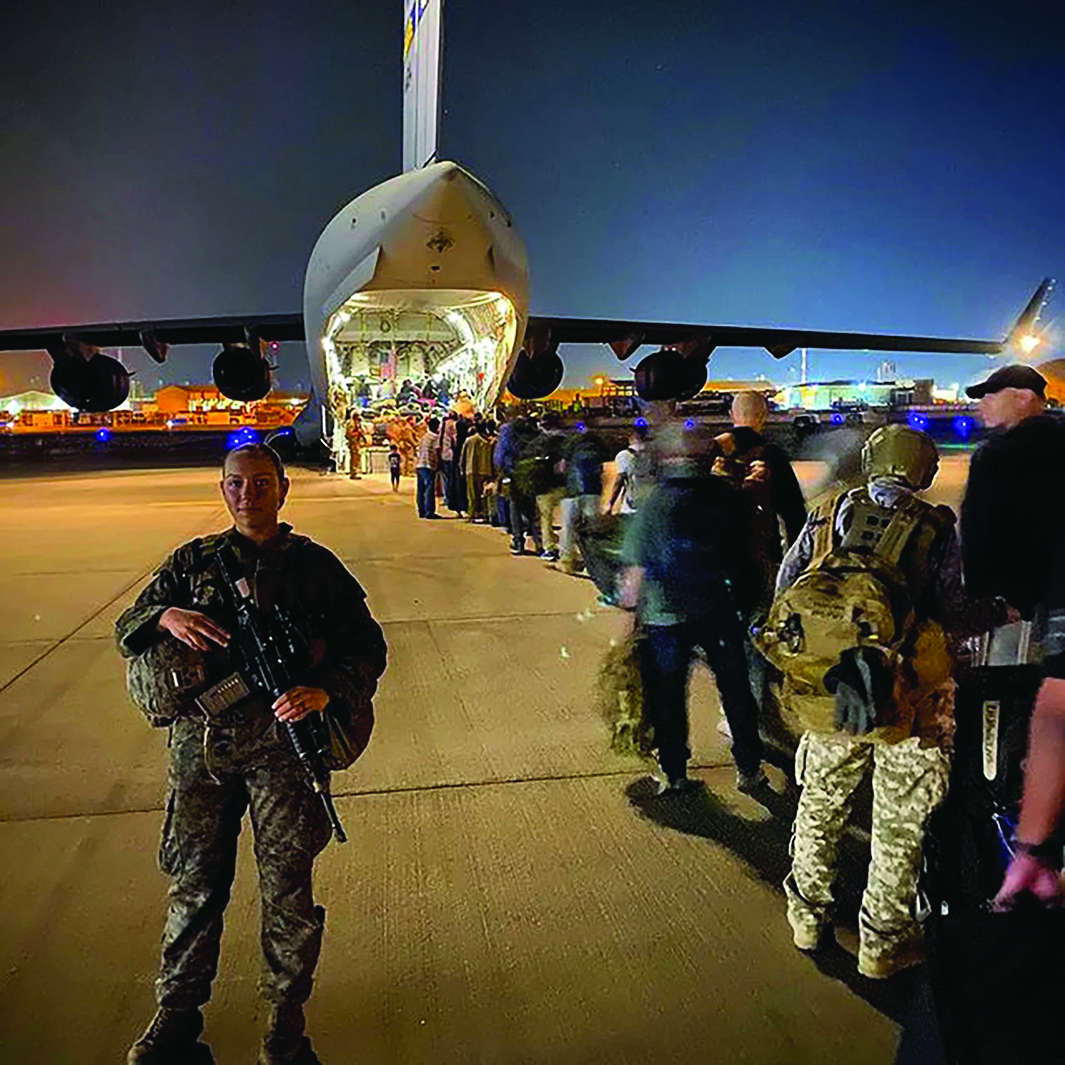
Sgt Gee posted this picture to her Instagram account, standing next to a long line of evacuees at Hamid Karzai International Airport.
Nicole Gee, Instagram account.
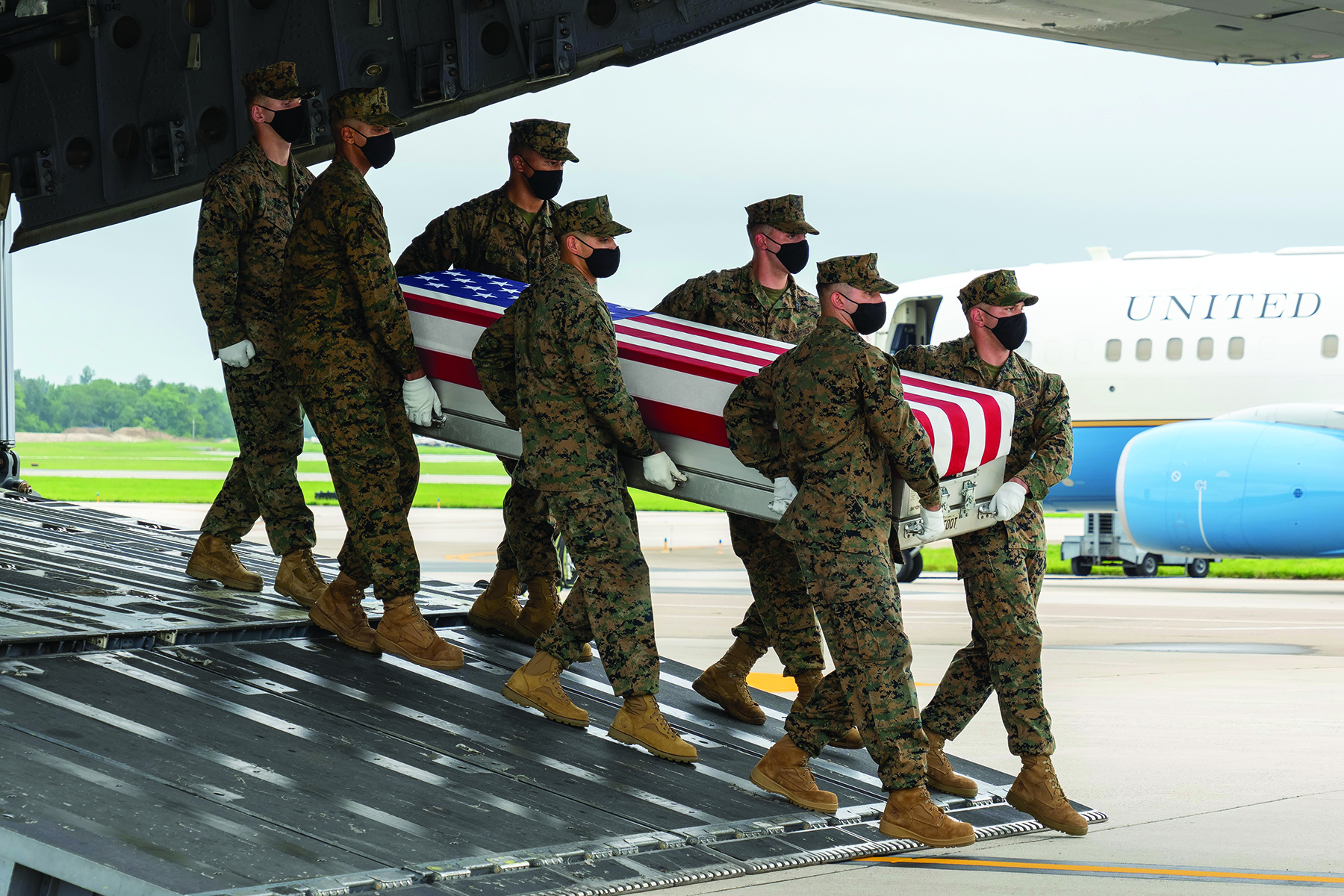
A U.S. Marine Corps carry team transfers the remains of Sgt Nicole L. Gee of Sacramento, CA, on 29 August 2021 at Dover Air Force Base, DE.
Photo by Jason Minto, Defense Visual Information Distribution Services.

A Marine presents Sgt Gee’s husband, Jarod, with a U.S. flag during her funeral.
Photo by Elizabeth Fraser, Defense Visual Information Distribution Services.
Sergeant Gee’s body was returned to the United States on 29 August 2021 and was laid to rest at Arlington National Cemetery on 29 September 2021. During her memorial service, Sergeant Mallory Harrison, a close friend of Gee, remarked, “She lost her life so others may live and, without a doubt, she died proud. Proud of who she was, proud of what she was doing, and proud to be a United States Marine.”
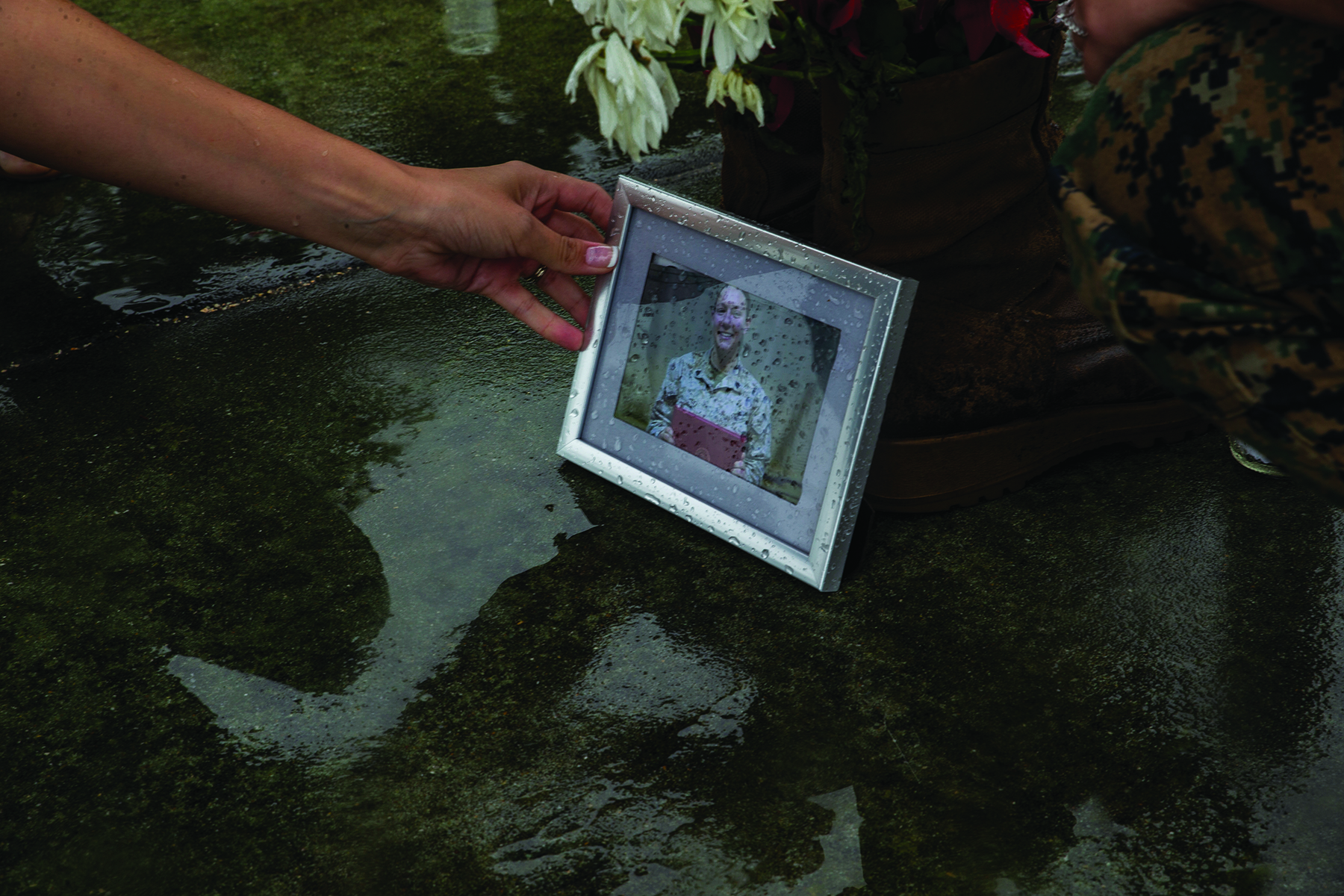
A photograph from a memorial for Sgt Gee.
Photo by LCpl Aliannah Bartok, Defense Visual Information Distribution Services.
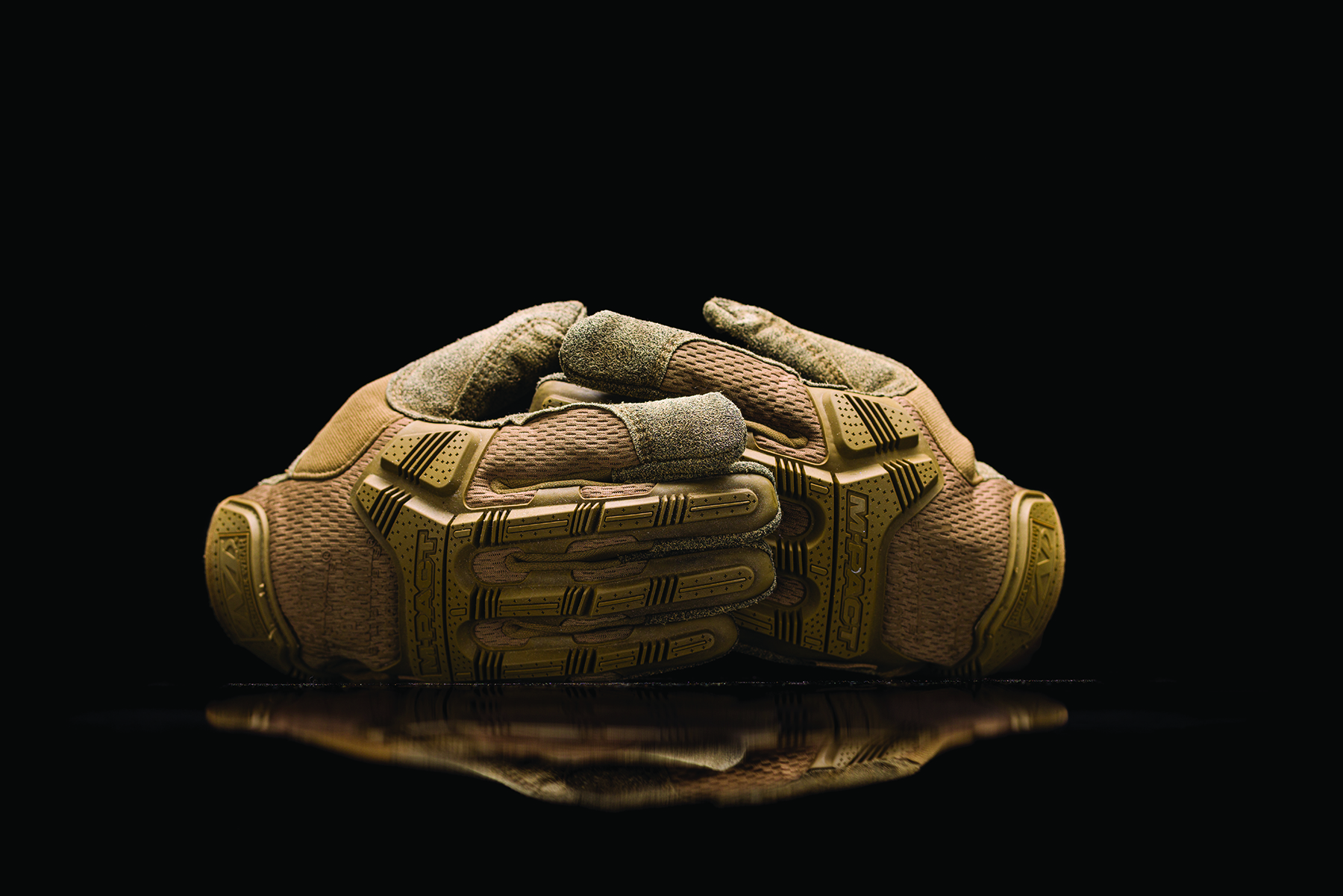
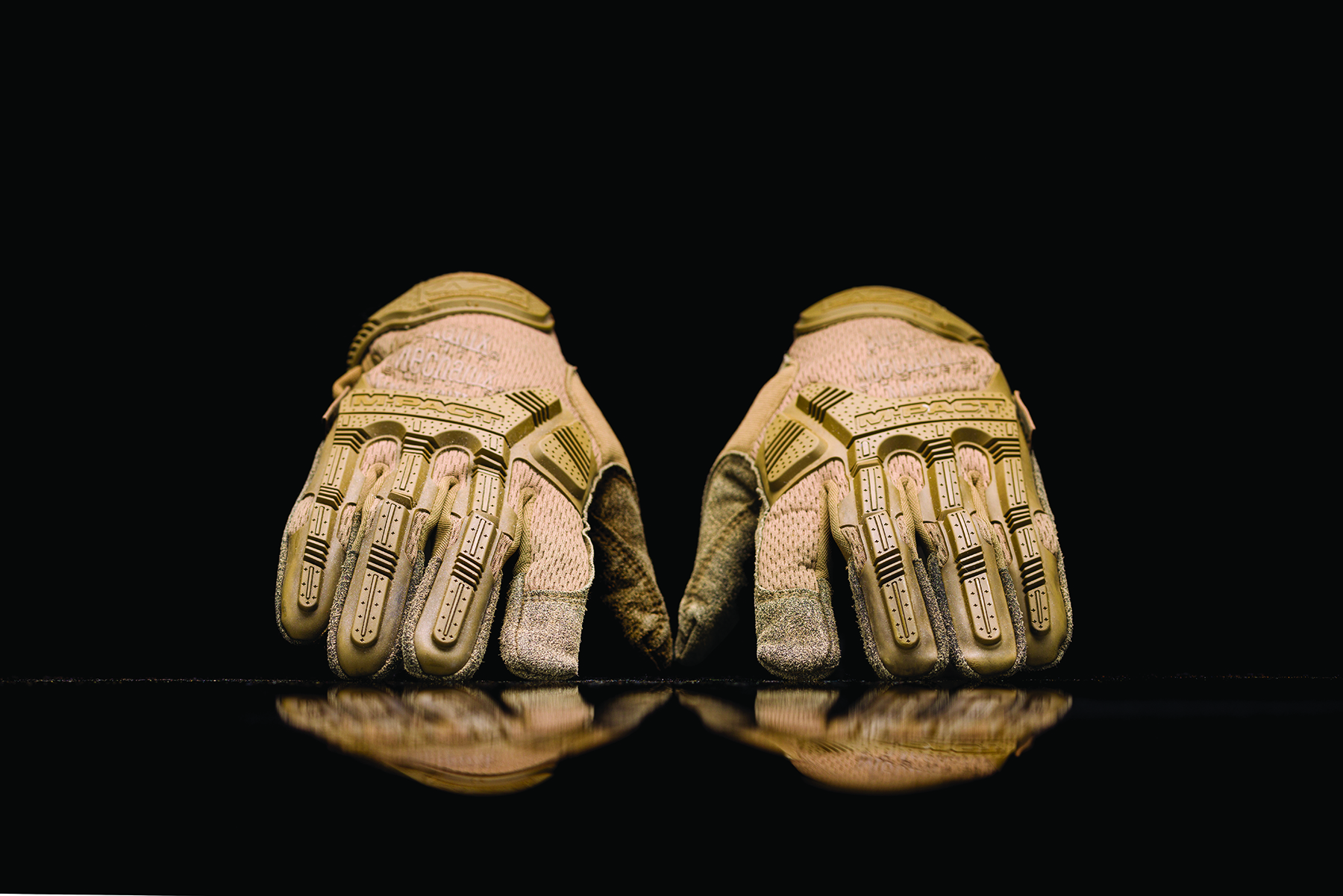
These TAA M-PACT Mechanix gloves were donated to the National Museum of the Marine Corps in 2023 by Cheryl Juels, Nicole Gee’s aunt. These gloves are similar to the ones that Sgt Gee wears in her touching photograph; she was likely rotating between the two pairs of gloves while processing evacuees. Included in the donation were two handwritten notes from one of Gee’s fellow Marines, LCpl Layla Loughman, who detailed the situation surrounding the photograph: “One of our first days in Kabul Sgt. Gee and I got sent to the front at the North Gate. . . . We were dealing with a stressful situation with a mother and a baby. . . . I looked up at Sgt. Gee who was smiling at this baby. Amidst all the chaos, she was always able to put a smile on.”
Photos by Jose Esquilin, Marine Corps University Press.
Endnotes
[1] “Female Engagement Teams–FETs,” National Museum of the Marine Corps, accessed 7 May 2024.
[2] Sgt Sheena Adams, “Female Engagement Teams,” Leatherneck, 27 May 2013.
[3] Craig Collins, “Semper Fi: Women in the Marine Corps,” Defense Media Network, 23 May 2018.
[4] “Nicole Gee, Sergeant, U.S. Marine Corps,” Foundation for Women Warriors, accessed 7 May 2024.